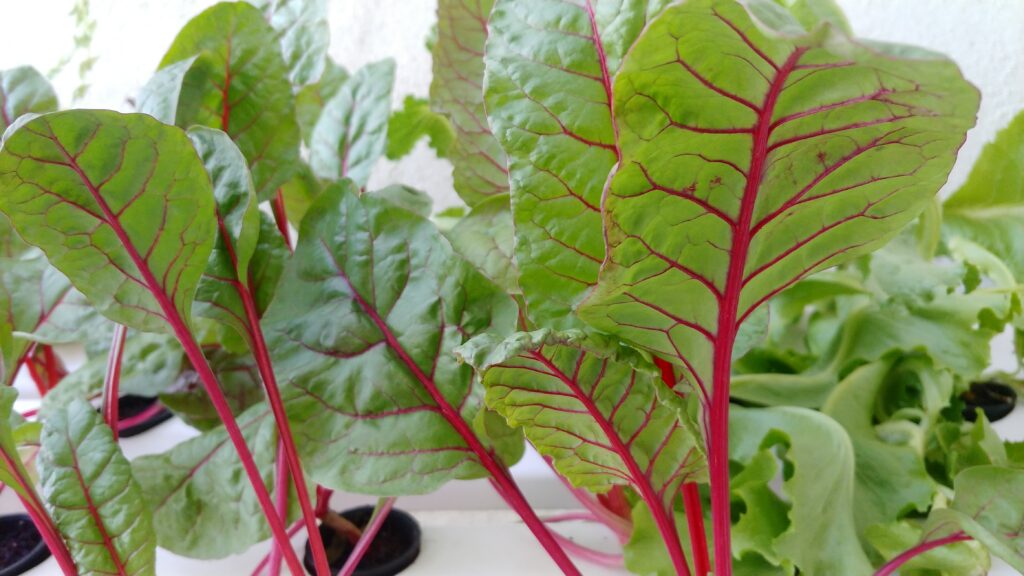If you’ve ever wondered about growing your own delicious strawberries using hydroponic methods, you’ve come to the right place. In this article, we will explore all the essential elements required for a successful hydroponic strawberry garden. From the perfect growing medium to suitable nutrient solutions, we’ve got you covered. So sit back, relax, and get ready to embark on your journey to growing juicy, mouthwatering strawberries right in the comfort of your own home.
Nutrient Solution
pH Levels
Maintaining the proper pH levels in a hydroponic system is crucial for the successful growth of strawberry plants. The ideal pH range for strawberries is between 5.5 and 6.5. This slightly acidic environment allows for optimal nutrient uptake and reduces the risk of nutrient deficiencies or toxicities. Periodically testing the pH levels using a pH meter or paper strips is necessary to ensure the plants are receiving the right balance of nutrients.
Nutrient Composition
A well-balanced nutrient solution is essential for providing strawberries with all the necessary elements for healthy growth. The composition of the nutrient solution should include essential macronutrients (such as nitrogen, phosphorus, and potassium) and micronutrients (iron, manganese, zinc, etc.). These nutrients can be purchased as pre-mixed hydroponic nutrient solutions, or you can create a custom blend based on the specific needs of your strawberry plants. It is crucial to follow the recommended dosages and adjust as necessary based on plant growth and nutrient deficiencies.
Monitoring and Adjusting
Regular monitoring of the nutrient solution is vital to ensure that the plants are receiving the proper nutrients. Conducting routine tests for pH levels, electrical conductivity (EC), and nutrient levels can help identify any imbalances or deficiencies. Adjustments to the nutrient solution should be made gradually, as sudden changes can stress the plants. Adding or reducing the concentration of specific nutrients can be done by diluting or adding components to the solution. Keeping a log of the nutrient solution adjustments will help maintain a stable and healthy growing environment for your hydroponic strawberry plants.
Growing Medium
Inert Substrate Options
Choosing the right growing medium plays a crucial role in the success of hydroponic strawberry cultivation. Inert substrates, such as coconut coir, perlite, or rockwool, are commonly used for growing strawberries hydroponically. These substrates provide excellent water retention while allowing for sufficient aeration and drainage. They are lightweight, pH neutral, and free from pests or diseases, providing an ideal environment for the roots to grow and absorb nutrients.
Root Support
To ensure strong and healthy root growth, it is essential to provide adequate support for the strawberry plants. One common method is to use net pots or baskets filled with the chosen inert substrate. These pots or baskets allow the roots to expand freely while providing stability to the plants. Sufficient root support prevents the plants from becoming top-heavy and minimizes the risk of root damage or nutrient blockage.
Lighting
Sunlight or Artificial Lighting
Strawberries require abundant sunlight to thrive, making them an excellent candidate for outdoor hydroponic systems. Placing the hydroponic setup in a location that receives at least six hours of direct sunlight is ideal for optimal growth. However, if sunlight is limited, artificial lighting can be used as a supplement or as the primary light source. LED grow lights are particularly suitable due to their energy efficiency and ability to provide the necessary light spectrum for photosynthesis.
Light Duration and Intensity
For outdoor hydroponic systems, it is essential to ensure that strawberries receive a minimum of six hours of direct sunlight per day. If relying on artificial lighting, the duration and intensity should mimic natural daylight patterns. Providing a light-dark cycle of 12-16 hours is generally sufficient for strawberry plants. Adjusting the intensity of the artificial lights based on the growth stage (e.g., higher intensity during flowering and fruiting) can further enhance plant productivity.
Temperature and Humidity
Optimal Temperature Range
Maintaining the proper temperature range is crucial for the healthy growth of hydroponic strawberry plants. The ideal daytime temperature for strawberries is between 60 to 75°F (15 to 24°C), while nighttime temperatures can be slightly cooler, ranging from 50 to 65°F (10 to 18°C). Avoiding extreme temperature fluctuations and providing adequate ventilation can help prevent stress and ensure optimum plant growth.
Humidity Control
Strawberries prefer moderate humidity levels to avoid issues such as fungal diseases and excessive transpiration. Aim for a humidity range of 50% to 70% to provide the optimal balance. Ventilating the growing area, using fans, and providing proper air circulation can help control humidity levels. Additionally, watering the plants during the cooler parts of the day can reduce humidity spikes caused by evaporation.
Watering and Irrigation
Watering Schedule
Establishing a consistent watering schedule is vital for hydroponic strawberry cultivation. Strawberries require regular and frequent watering to maintain proper hydration and nutrient uptake. A general guideline is to water the plants two to three times a day, ensuring that the growing medium remains moist but not waterlogged. Adjustments to the watering schedule may be necessary based on factors such as temperature, humidity, and plant size.
Irrigation System Options
Several irrigation systems can be used in hydroponic strawberry setups. Drip irrigation, where small, controlled amounts of water are delivered directly to the plants’ roots, is a popular and efficient method. Alternatively, an ebb and flow system, where the growing medium is intermittently flooded with nutrient solution, can also be employed. Both systems help prevent water waste and ensure that the plants receive water evenly and consistently.
Pollination
Hand Pollination
In hydroponic systems, manual pollination may be necessary to ensure the successful development of strawberry fruits. To hand-pollinate, gently transfer pollen from the stamen (male part) of one flower to the pistil (female part) of another flower. This can be done using a small brush or by carefully touching the flowers together. Repeat this process for several flowers to increase the chances of successful pollination and fruit formation.
Use of Pollinators
To encourage natural pollination, attracting pollinators such as bees or butterflies to the growing area can enhance fruit set and yield. Providing suitable flowering plants nearby, using pheromone attractants or installing honeybee hives or bumblebee boxes are ways to attract and support pollinators. However, care should be taken to ensure that these pollinators do not introduce pests or diseases that could harm the strawberry plants.
Pests and Diseases
Common Pests
While hydroponic systems reduce the risk of soil-borne pests, strawberries are still susceptible to a range of common pests. Aphids, spider mites, thrips, and whiteflies are a few common culprits that can threaten the health of your plants. Regular monitoring and quick action are essential to prevent pest infestations from damaging the crop.
Preventive Measures
Implementing preventive measures is crucial to minimize the risk of pests and diseases in hydroponic strawberry cultivation. Maintaining proper sanitation practices, including regularly cleaning and disinfecting equipment and growing surfaces, helps eliminate potential breeding grounds for pests and reduces disease spread. Additionally, implementing integrated pest management (IPM) strategies, such as using sticky traps, introducing beneficial insects, and practicing crop rotation, can help control pests naturally.
Treatment Options
If pests become established in your hydroponic system, there are several treatment options available. Organic insecticidal soaps or oils can be used to suffocate and kill pests while minimizing harm to beneficial insects and the environment. Chemical pesticides should be used as a last resort and should be carefully selected and applied according to the manufacturer’s instructions to minimize potential harm to the plants, yourself, and the surrounding environment.
Plant Support
Supporting Structures
As strawberry plants grow and develop fruit, they may require additional support to prevent the delicate stems from bending or breaking. Using trellises, cages, or stakes can provide the necessary support to keep the plants upright. By gently tying the stems to the support structure using soft plant ties, you can protect the plants and keep the fruit off the ground, reducing the risk of rot or pest damage.
Pruning and Training
Pruning and training strawberry plants are essential for maintaining proper airflow, preventing overcrowding, and encouraging fruit production. Remove any dead or yellowing leaves by cutting them off at the base. Regularly thinning out dense foliage and runners can also help redirect energy towards fruit production. Additionally, training the plants to grow vertically can maximize space utilization and improve light penetration, leading to healthier and more productive plants.
Harvesting and Storage
Ripe Fruit Indicators
Knowing when to harvest your hydroponic strawberries is crucial to achieve optimal flavor and texture. Look for indicators such as vibrant red color, shiny appearance, and fully developed seeds on the fruit’s outer surface. Gently press the berries between your fingers – they should be firm but not overly soft. The fruit’s fragrance can also provide clues as to its ripeness, with fully ripened strawberries emitting a sweet aroma.
Proper Harvesting Techniques
To harvest hydroponically grown strawberries, use a clean pair of scissors or pruning shears to cut the stem just above the fruit. Avoid pulling or twisting the fruit, as this may damage the plant or neighboring fruits. Handle the ripe strawberries gently to prevent bruising and place them directly into a clean container to maintain their freshness.
Storage Recommendations
Freshly harvested strawberries are best consumed immediately for the maximum flavor and nutritional value. However, if needed, they can be stored in the refrigerator for up to one week. To prolong their shelf life, only wash the strawberries right before consumption to prevent moisture retention. Storing them in airtight containers or lined with paper towels can help absorb excess moisture and reduce the chances of mold development.
Maintenance and Monitoring
Regular Inspections
Regular inspections of your hydroponic strawberry system are essential to identify any potential issues early on. Check the plants for signs of nutrient deficiencies or toxicities, pest infestations, or disease symptoms. Monitor the pH levels, electrical conductivity, and nutrient concentration of the solution to ensure they are within the optimal range. Promptly address any problems detected to maintain the health and productivity of your strawberry plants.
Nutrient Solution Replenishment
Over time, the nutrient solution in your hydroponic system will become depleted as the plants absorb the available nutrients. Regularly replenishing the nutrient solution with fresh, properly balanced solution is crucial for the continued health and growth of your hydroponic strawberries. Monitor nutrient levels and adjust the concentration as needed to ensure the plants are receiving a sufficient supply of essential elements.
Equipment Maintenance
Proper maintenance of your hydroponic system and associated equipment is vital for long-term success. Clean and disinfect any tanks, pumps, or irrigation systems regularly to prevent the growth of algae or bacteria. Check for any clogs, leaks, or malfunctions that may hinder the system’s functionality. Regularly replace worn-out components and ensure that all equipment, such as timers or sensors, are functioning correctly. By keeping your equipment in good working order, you can ensure a smooth and efficient hydroponic strawberry cultivation process.





